[An alternate version of this story ran on Crikey, Friday September 13, 2013 – click here]
BigSound
Fortitude Valley, Brisbane
September 10-13, 2013
Sitting on the bus into Brisbane’s Fortitude Valley for the final night of BigSound – Australia’s reasonably modest answer to the behemoth that is Austin, Texas, music industry shindig South By South West – I find myself savouring the calm.
It’s early evening on a Thursday, traditionally a day to let loose, to get a jump on the upcoming weekend, but it’s been a long few days and so I’m enjoying the relative quiet; the hum of the engine, the gentle forward motion, the space, the solitude.
It’s short-lived though. “Last stop before the city,” yells the driver, a pork barrel of a man in navy blue shorts, neck like a ham, and so I’m ejected onto the sidewalk at the corner of Ann and Brunswick and the calm is all but a distant memory.
For this is the Valley, where the city’s drunken elite meld all too easily with the barrel bottom, a place that used to house the bohemian element, before rapid, and rampant, development had them fleeing across the river to the relative safety of hippie haven, West End.
The music still resides in back alleys though, upstairs in odd warehouse spaces, boutique venues still thriving and so it’s the ideal place for BigSound, this year running for the 12th time, a three day conference that brings all involved in music in this country, and beyond, together to nut out problems faced by an ever-shrinking industry, to collaborate in order to overcome barriers to growth, to find the ‘next big thing’, to talk.
Idle talk, big talk, small talk, chit chat, back chat, talk back. It’s all about the talk – to paraphrase from ‘79 sci-fi flick Alien, at BigSound, no one can hear you scream. Because they’re all too busy talking. It’s a tsunami and it washes over you leaving you battered, bruised ear drums, craving silence. I long for the bus.
“It’s about connecting people,” says Executive Programmer Graham Ashton, this year being his last BigSound at the helm. Given it’s late on the Thursday, he’s sufficiently relaxed. “People come from all over the world… [BigSound] is about making connections.”
Networking, they call it. It’s happening all around us, standing as we are in the dingy smokers area out the back of what was once Mustang Bar, people with sky-blue lanyards talking shop. Or perhaps, given the hour, shit.
During the day, over the past three days, BigSound is a mild-mannered conference, comprising panel discussions like The Future Of Australian Music, Indie Labels 2013 Style, Touring Tips & The Live Music Environment, along with a plethora of In Conversations.
By night however, it’s like this; there are over 120 bands playing over two nights this year, and so music flows, as does the hooch, and an environment like this is fostered, where people spill outside in between songs to network. To connect.
“There are no rules to this,” Ashton says after a bit of thought. “That’s why music is so exciting. Every band is different, every idea is different, there are no rules. One thing though, [BigSound] isn’t education, it’s inspiration.”
The inspiration for most comes in the form of the music itself – scungy rock ‘n’ roll bands, thundering country, lilting folk and pogo pop, for this is why we’re all here. Whether it’s Billy Bragg or Robert Forster playing Bakery Lane to a full house, or some young quintet out of Melbourne playing an early slot to an almost empty room, the entire place throbs with not only literal sound, but with an inspired energy. People are excited, they want to share, and so connections are made, as they should be.
It’s not all beer and skittles however. One of the reasons events like this exist is to talk about what’s not going right, about how to change same, how to better the industry and to help all those who work within.
In typical fashion, during the The Future Of Australian Music discussion, outspoken promoter and label head Michael Chugg lashes out at commercial radio’s local music quotas, saying, “The quota’s far too low and they take advantage of late night… running tracks from midnight to dawn. They’ll deny it, but it’s true… It’s bullshit, and it’s holding the industry back.”
At the Byron Bay Bluesfest showcase at lunchtime on Wednesday, festival director Peter Noble attacks on a different front, saying in front of a large crowd, “I don’t want to criticise [politicians], but they’ve got to emulate,” referencing the lack of support the Australian government offers its musicians compared to their Canadian counterparts.
Perhaps he should have had a word in Wayne Swan’s ear, although the ex-Treasurer seemed far more preoccupied with UK punk poet Billy Bragg, seen at both his show and his keynote speech, tweeting later about the latter, “A really engaging discussion by Billy Bragg… about the power of music and the purpose of politics…”
It’s a shame Bragg wasn’t around a few months ago to give the same talk to the crumbling Labor party, but I digress.
So it remains to be seen what comes out of BigSound this year, at least in terms of solid, lasting, effective change. If you were to just buy a ticket to the music side of things, you could easily be forgiven for thinking that music in Australia is alive and well, and it is, without a doubt.
A new government though, not one renowned for generous arts funding, will have an impact, but as the dust still settles, people nursing final night hangovers, it seems inspirations and connection, the initial aims of BigSound, have been achieved. There is, however, still a lot to talk about.
Samuel J. Fell
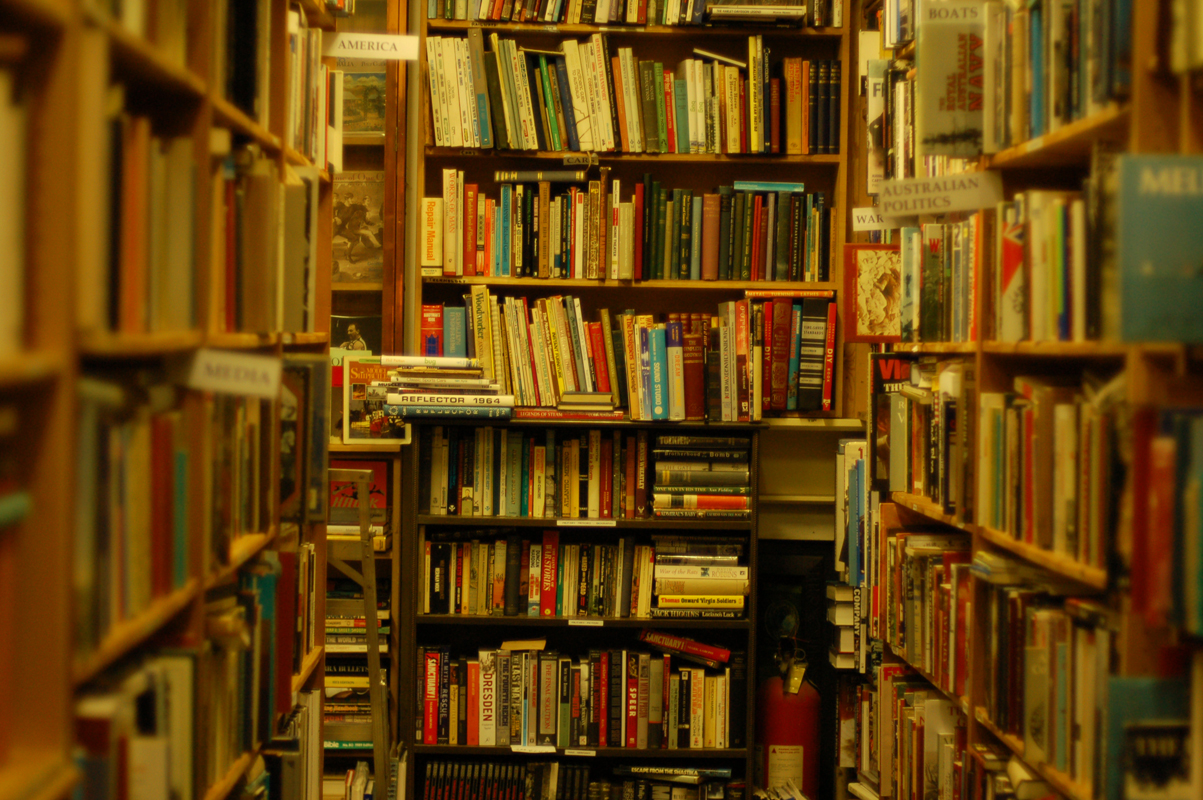

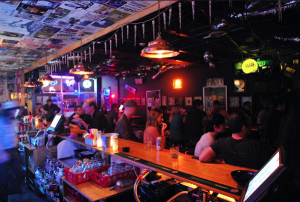
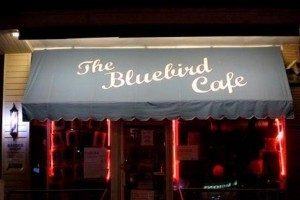 We based ourselves in East Nashville (thank you AirBnB), an area of town that over the past five or six years has blossomed from a working class neighbourhood into a tight-knit community of young families and single twenty-somethings, renovated little cottages on tree-lined streets and, of course, a thriving venue, restaurant, food truck and music scene.
We based ourselves in East Nashville (thank you AirBnB), an area of town that over the past five or six years has blossomed from a working class neighbourhood into a tight-knit community of young families and single twenty-somethings, renovated little cottages on tree-lined streets and, of course, a thriving venue, restaurant, food truck and music scene.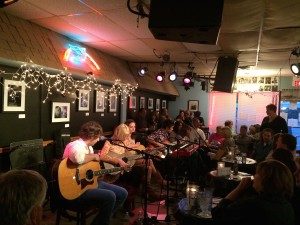
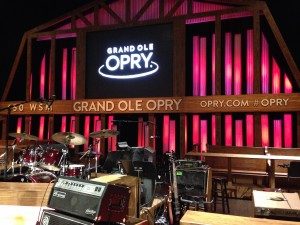 The former group are fine at what they do, but are hardly my cup of tea. McReynolds though, with his group behind him, huddled around the one mic playing the sweetest bluegrass you’ll find anywhere replete with perfect vocal harmonies, was astounding. As was Charlie Daniels and his band – man, their version of ‘The Devil Went Down To Georgia’ was incendiary, Daniels himself on fiddle, he almost set it alight, went through at least two bows during the course of the song – magical stuff.
The former group are fine at what they do, but are hardly my cup of tea. McReynolds though, with his group behind him, huddled around the one mic playing the sweetest bluegrass you’ll find anywhere replete with perfect vocal harmonies, was astounding. As was Charlie Daniels and his band – man, their version of ‘The Devil Went Down To Georgia’ was incendiary, Daniels himself on fiddle, he almost set it alight, went through at least two bows during the course of the song – magical stuff. Big mistake – this was so hot, we couldn’t finish it. I tried hard, it tasted so good. But I feared permanent damage to my taste buds, and so had to leave some behind. Highly recommended, but note they don’t muck around with their spice levels – I’m still sweating.
Big mistake – this was so hot, we couldn’t finish it. I tried hard, it tasted so good. But I feared permanent damage to my taste buds, and so had to leave some behind. Highly recommended, but note they don’t muck around with their spice levels – I’m still sweating.
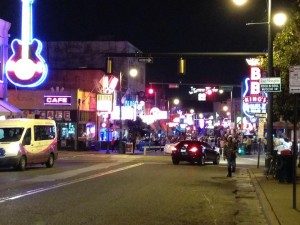
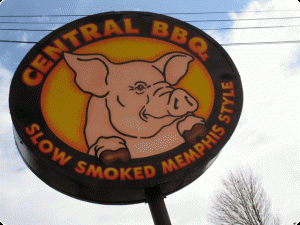 Still on food, and food other than BBQ, our first night in town we were hosted at Eighty3, the restaurant attached to the Madison. I feel I must apologise to executive chef Max Hussey, who I’d met in the lobby earlier in the day, because by this stage of our trip, all I wanted was something simple and familiar and so I ordered steak frites. Most unadventurous.
Still on food, and food other than BBQ, our first night in town we were hosted at Eighty3, the restaurant attached to the Madison. I feel I must apologise to executive chef Max Hussey, who I’d met in the lobby earlier in the day, because by this stage of our trip, all I wanted was something simple and familiar and so I ordered steak frites. Most unadventurous.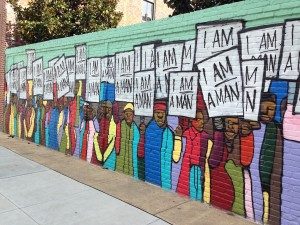 We head from there to Rock ‘n’ Soul, which by comparison seems lacklustre. It’s not, but perhaps don’t go and walk through straight after the Civil Rights. It does cover a lot of ground though, from the blues players heading north in the early part of the 20th century, the bustle of Beale Street at the time where players came to ‘make it’ (including Mr BB King), to the birth of soul and rock ‘n’ roll over at Sun Studios. It’s only a small museum, but it does a good job of keeping things precise, giving you a nice overview from which you can then explore in more depth by heading to Sun or Stax or one of the many other musical museums in town.
We head from there to Rock ‘n’ Soul, which by comparison seems lacklustre. It’s not, but perhaps don’t go and walk through straight after the Civil Rights. It does cover a lot of ground though, from the blues players heading north in the early part of the 20th century, the bustle of Beale Street at the time where players came to ‘make it’ (including Mr BB King), to the birth of soul and rock ‘n’ roll over at Sun Studios. It’s only a small museum, but it does a good job of keeping things precise, giving you a nice overview from which you can then explore in more depth by heading to Sun or Stax or one of the many other musical museums in town.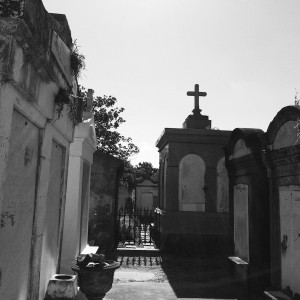
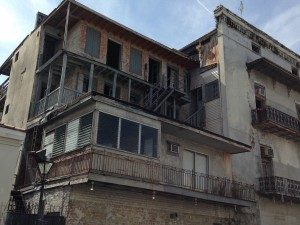 Wide, flat roads and tired looking houses, run down cars and shops with boarded windows. It’s confronting in many respects, and seems like a different city from a different time, compared to the more gentrified areas scattered about the Big Easy, one of America’s most famous towns.
Wide, flat roads and tired looking houses, run down cars and shops with boarded windows. It’s confronting in many respects, and seems like a different city from a different time, compared to the more gentrified areas scattered about the Big Easy, one of America’s most famous towns.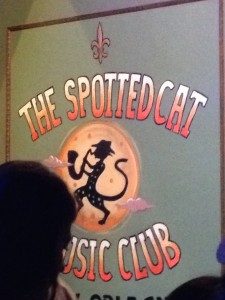 We wander further down Frenchmen onto Decatur Street, which leads into the Quarter proper, and find ourselves in the divey Aunt Tiki’s, a black hole of a bar open 24 hours a day, a clutch of regulars sitting down the front, dank and dark, a truly beautiful place where I feel completely at home, joking with the two bartenders (one of whom has had more to drink than I), sipping on Jack Daniels with Budweiser chasers, just soaking up a New Orleans Friday night.
We wander further down Frenchmen onto Decatur Street, which leads into the Quarter proper, and find ourselves in the divey Aunt Tiki’s, a black hole of a bar open 24 hours a day, a clutch of regulars sitting down the front, dank and dark, a truly beautiful place where I feel completely at home, joking with the two bartenders (one of whom has had more to drink than I), sipping on Jack Daniels with Budweiser chasers, just soaking up a New Orleans Friday night.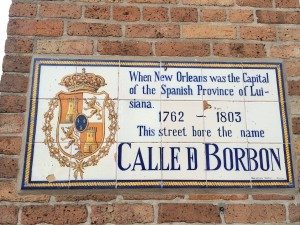 The second two nights in town, we stay at the Maison Dupuy on the northern edge of the Quarter. Built on the site of America’s first cotton press, it’s now a grand old dame of a hotel, a collection of five buildings grouped around a pool and courtyard, an old time opulence about it that makes it more endearing than high-end. We base ourselves there as we explore the rest of the Quarter, including the historic Voodoo Museum, Café du Monde and the Hotel Monteleonewhich has a revolving carousel bar and serves up audacious cocktails and turns out to be a good spot to watch the more upscale Quarter clientele and watch the LSU game on the televisions about the wood-paneled room.
The second two nights in town, we stay at the Maison Dupuy on the northern edge of the Quarter. Built on the site of America’s first cotton press, it’s now a grand old dame of a hotel, a collection of five buildings grouped around a pool and courtyard, an old time opulence about it that makes it more endearing than high-end. We base ourselves there as we explore the rest of the Quarter, including the historic Voodoo Museum, Café du Monde and the Hotel Monteleonewhich has a revolving carousel bar and serves up audacious cocktails and turns out to be a good spot to watch the more upscale Quarter clientele and watch the LSU game on the televisions about the wood-paneled room.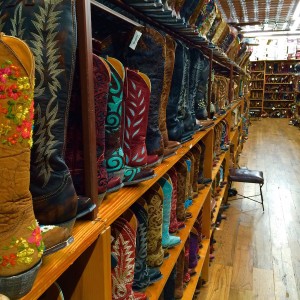
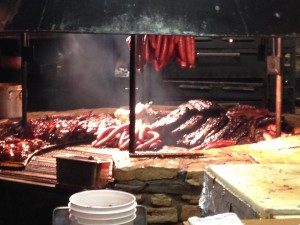
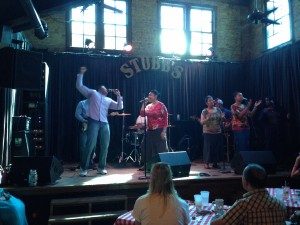
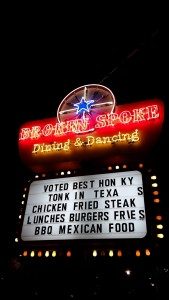 We head in early to take advantage of the Texas Two-Step lesson, which runs for an hour and is hosted by a rough-as-guts Texan woman who ain’t taking no shit, but who guides us novices through our paces, and after an hour, we’re steppin’ around like we’ve been doing it for years (slight exaggeration). That done, Austin legend James Hand gets up with his band and the dancefloor is swamped. They play real country music, yee-haw, and the packed house loves it. This is just a downhome, red-dirt kinda place, an institution, the ‘last true dance hall in Texas’, a must for anyone with even a passing love of anything remotely linked to the Lone Star State.
We head in early to take advantage of the Texas Two-Step lesson, which runs for an hour and is hosted by a rough-as-guts Texan woman who ain’t taking no shit, but who guides us novices through our paces, and after an hour, we’re steppin’ around like we’ve been doing it for years (slight exaggeration). That done, Austin legend James Hand gets up with his band and the dancefloor is swamped. They play real country music, yee-haw, and the packed house loves it. This is just a downhome, red-dirt kinda place, an institution, the ‘last true dance hall in Texas’, a must for anyone with even a passing love of anything remotely linked to the Lone Star State.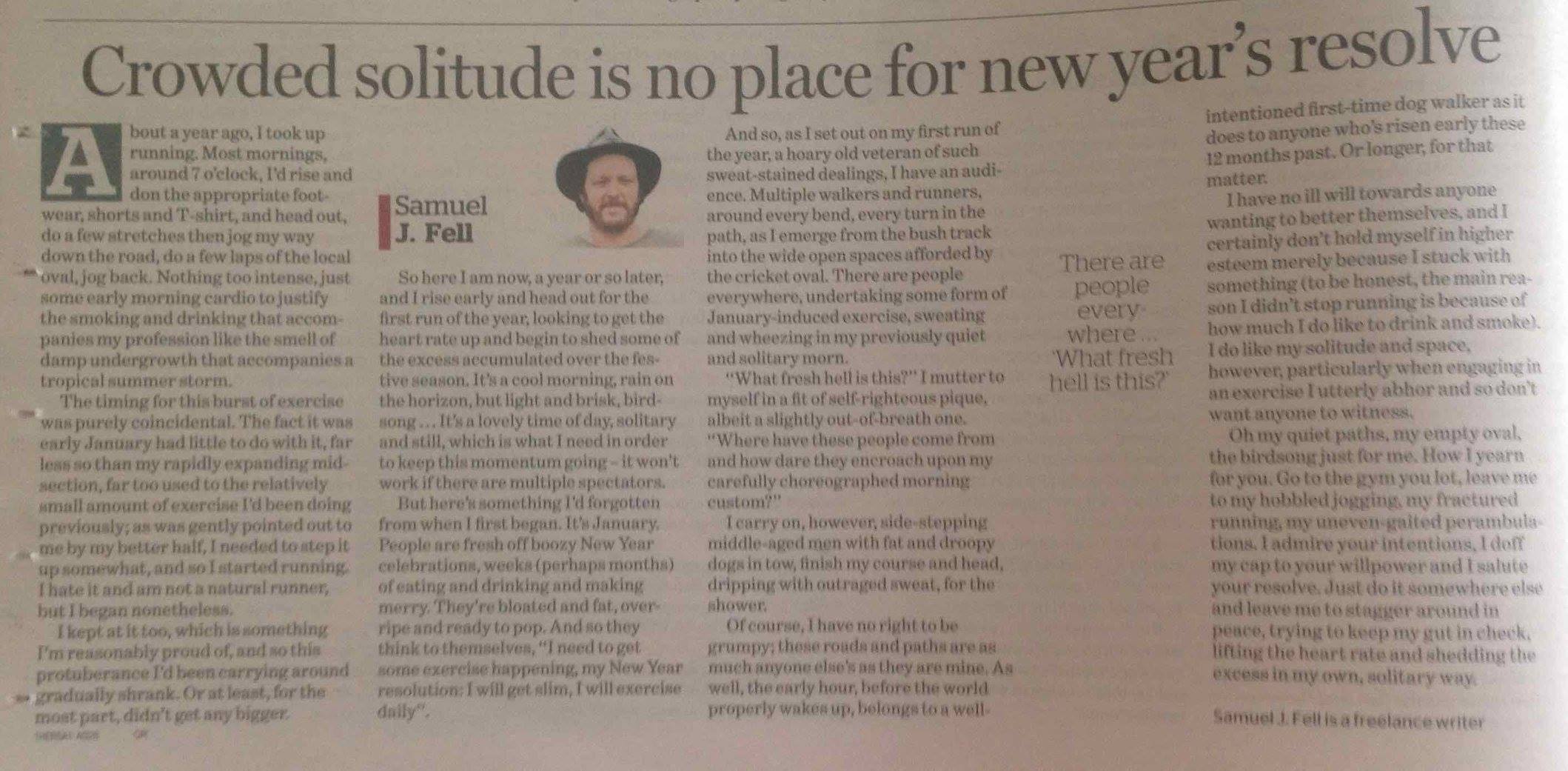
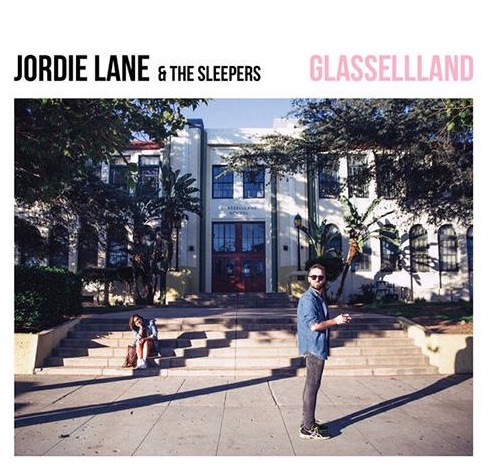
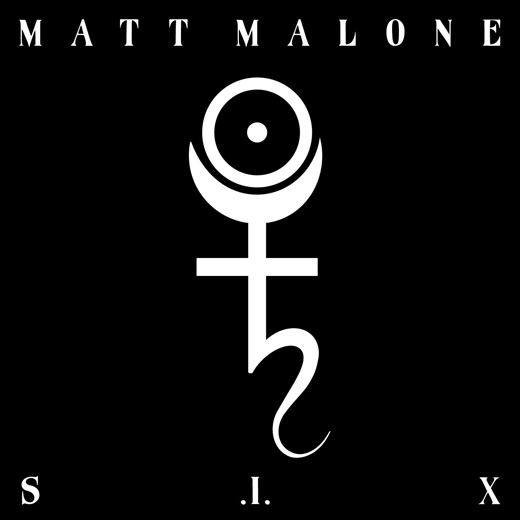
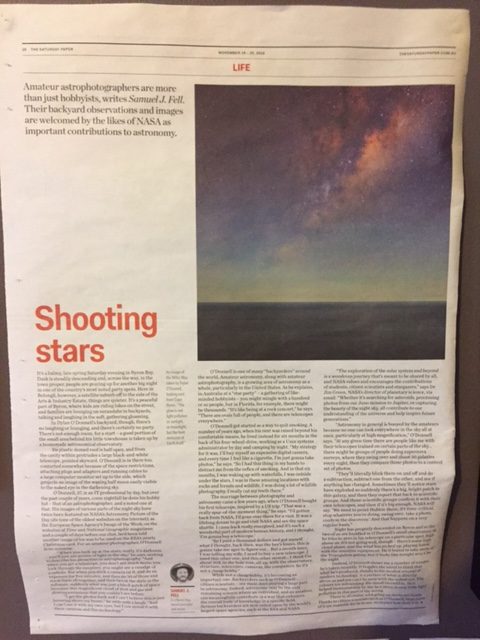
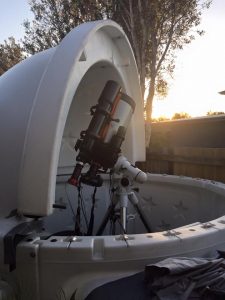 O’Donnell, 37, is an IT professional by day, but over the past couple of years, come nightfall, he leaves that behind him and dons his hobby hat – that of an Astro photographer, and a noted one at that. His images of various parts of the night sky have twice been featured on US space agency NASA’s Astronomy Picture of the Day site (which, incidentally, is one of the oldest websites on the internet); as the European Space Agency’s Image of the Week; on the websites of Time and National Geographic magazines; and a couple of days prior to our chat, he’d found out another image of his was to be used on the ESA’s annual Christmas card. For an amateur Astro photographer, O’Donnell is no minnow.
O’Donnell, 37, is an IT professional by day, but over the past couple of years, come nightfall, he leaves that behind him and dons his hobby hat – that of an Astro photographer, and a noted one at that. His images of various parts of the night sky have twice been featured on US space agency NASA’s Astronomy Picture of the Day site (which, incidentally, is one of the oldest websites on the internet); as the European Space Agency’s Image of the Week; on the websites of Time and National Geographic magazines; and a couple of days prior to our chat, he’d found out another image of his was to be used on the ESA’s annual Christmas card. For an amateur Astro photographer, O’Donnell is no minnow.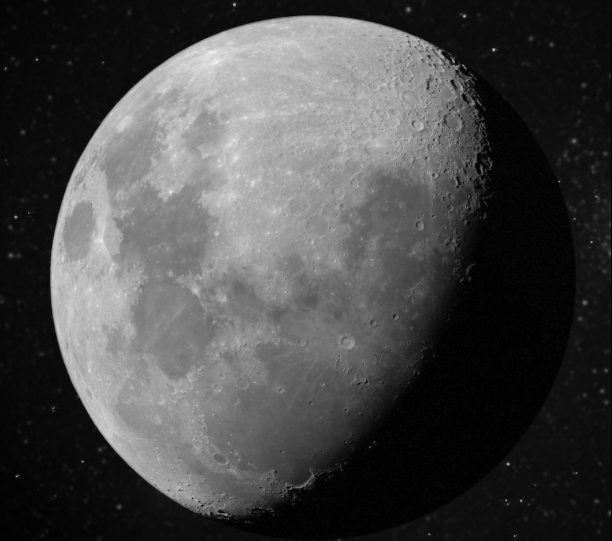
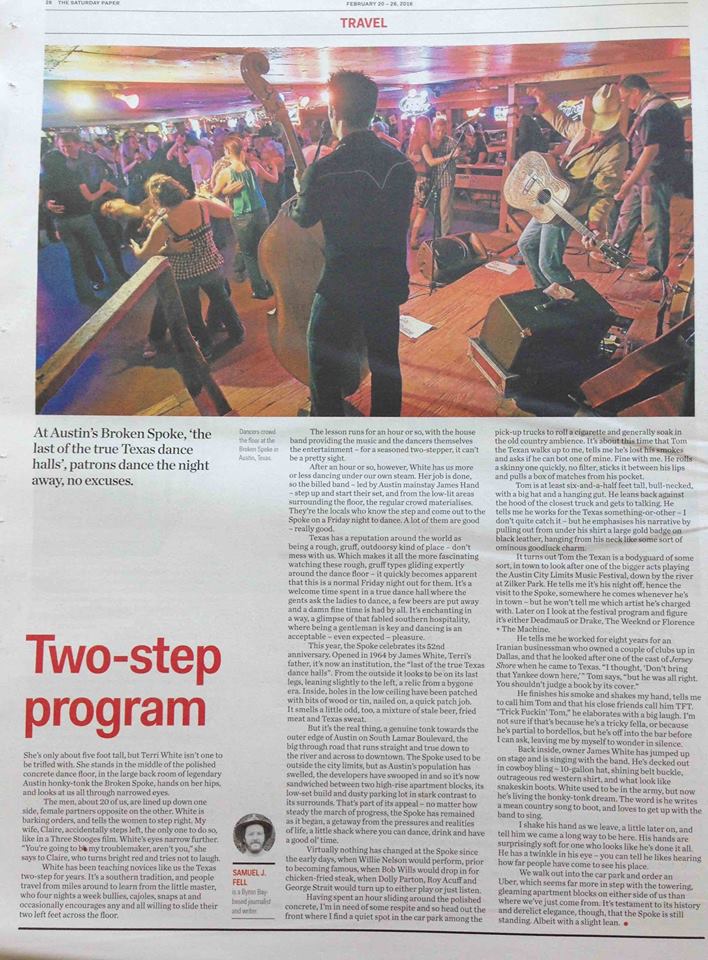
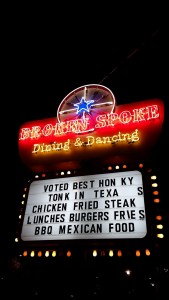 It used to be outside the city limits, but as Austin’s population has swelled, the developers have swooped in and so it’s now sandwiched between two high-rise apartment blocks, its low-set build and dusty parking lot in stark contrast to its surrounds. Which is part of its appeal – no matter how steady the march of progress, the Spoke has remained as it began, a getaway from the pressures and realities of life, a little shack where you can dance, drink and have a good ol’ time.
It used to be outside the city limits, but as Austin’s population has swelled, the developers have swooped in and so it’s now sandwiched between two high-rise apartment blocks, its low-set build and dusty parking lot in stark contrast to its surrounds. Which is part of its appeal – no matter how steady the march of progress, the Spoke has remained as it began, a getaway from the pressures and realities of life, a little shack where you can dance, drink and have a good ol’ time.